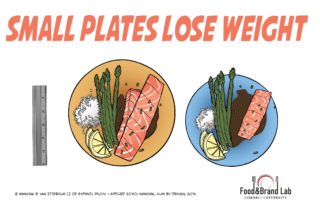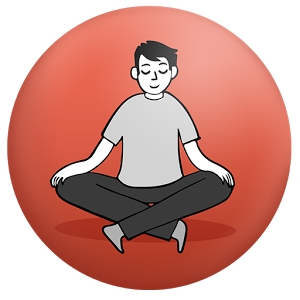Over my Easter weekend with family, this word – mindfulness – came up a few times. It became a hot conversation topic and sparked curiosity and interest within all of us, particularly with those that do not have much experience with it, or do not fully know what it is.
‘Mindfulness’ has been a big buzz word for the past little while now, but after our family conversation over the weekend, it became clear to me that not everyone really knows what it is, or the purpose of it.
Some were arguing that it was a technique used to relax and clear the mind, while others argued that it was a strategy to improve concentration on whatever you are doing. While neither of these are entirely wrong, they are also not entirely accurate. Some felt that it was more effortful to be consciously mindful than to just move through the day as one normally would, and others felt that it was something that could only be done if time was set aside each day to dedicate to the practice of it. Again, neither points are globally wrong, although neither are fully correct either.
I realized through our conversations, that mindfulness is not a clear cut idea that everyone and anyone would come to understand from just one simple definition, although the practice of it can truly be simple once you understand its purpose.

So then what IS mindfulness anyway?
The way I would define mindfulness is that it consists of openly, fully, and non-judgementally experiencing all there is to experience in any given moment, both internally and externally. Mindfulness is about connecting with your senses and being present in the here and now, It is about acknowledging, accepting, and ‘ sitting with’ whatever thoughts, feelings, emotions, judgements, physical sensations, or other internal or external content that shows up for you, without trying to change it. It is also about learning how to see each of the pieces of your experience as equal parts of your moment-to-moment existence in that you are not labelling or attaching any form of judgment to them as being ‘good’ or ‘bad’, ‘right’ or ‘wrong’.
While many believe that mindfulness is a relaxation technique, relaxation is not exactly the aim of mindfulness, although can often be a ‘side effect’. When we are being mindful, we are not trying to clear our minds and think of ‘nothing’, we are actually doing quite the opposite – noticing and acknowledging everything that is showing up in our mind. The difference between being mindful and being in full concentration of something may be that when you are in full concentration you have likely attached yourself in some way to what it is you are focusing on, whereas with mindfulness the goal is to stay detached from the content of your mind and to allow it to come and go as it will.
I can fully understand why some may feel that mindfulness takes effort, and that is because it is not how we have evolved to go about life. Living the busy lives that we all live often leads us to living life in what we like to call ‘auto-pilot’ without fully noticing and appreciating our experiences. For example, perhaps while enjoying a relaxing, soothing massage, we are thinking about the work we have to get done that evening, or thinking about what we will make for dinner. Or while out for dinner with friends, we may be scrolling through our cell phones to see what we have missed on social media, or to check whether we have any ‘urgent’ emails to respond to. So yes, being mindful does not always come easy to us, which is why it is important to practice it every day.
There are two kinds of mindfulness: (1) Formal mindfulness, and (2) Informal mindfulness. Formal mindfulness requires setting aside time to practice mindfulness. This would include choosing a particular mindfulness technique such as breath awareness, and setting aside a specific amount of time dedicated only to that. Informal mindfulness can be paired with any of your day-to-day activities. Some great examples of when you can practice informal mindfulness include while washing dishes, while brushing your teeth, or while taking a hot shower. These are things that we tend to do on a daily basis, but may not be fully present in the experiences involved with each of these activities since they are so routine to us.
Practicing mindfulness can be challenging at first, but the more one practices, the more likely they are to notice that they are becoming more mindful in their daily lives without even trying and without any added effort.
I encourage you all to start off by setting aside 10 minutes per day to practice formal mindfulness, and I encourage you to incorporate informal mindfulness into as many of your daily activities as you can. Like I said, the more you practice, the more likely you are to naturally be more mindful within your daily life.
Here is an example of a quick formal mindfulness strategy that you can try as you start out:
This is a simple exercise to center yourself and connect with your environment. Practice it throughout the day, especially any time you find yourself getting caught up in your thoughts and feelings.
- Take ten slow, deep breaths. Focus on breathing out as slowly as possible until the lungs are completely empty—and then allow them to refill by themselves.
- Notice the sensations of your lungs emptying. Notice them refilling. Notice your rib cage rising and falling. Notice the gentle rise and fall of your shoulders.
- See if you can let your thoughts come and go as if they’re just passing cars, driving past outside your
- Expand your awareness: simultaneously notice your breathing and your body. Then
look around the room and notice what you can see, hear, smell, touch, and feel.
Here is an example of how you can be informally mindful while doing an activity, such as washing the dishes:
Notice the temperature of the water, notice the texture of each of the dishes, notice the weight of the dishes, notice the smell of the soap, notice how the sponge feels, notice how your hands feel when they are full of soap versus when they are not, notice the sounds associated with washing the dishes.
See if you can optimize your engagement and appreciation of all that is involved within your daily activities by being mindful as you carry them out.
Good luck, and please feel free to share some of your thoughts and comments with us as you progress through your journey mindfully.




















 Calm:
Calm: Head Space:
Head Space: Stop Breath Think:
Stop Breath Think: Happier:
Happier:
 Optimism:
Optimism: ACT Coach:
ACT Coach: